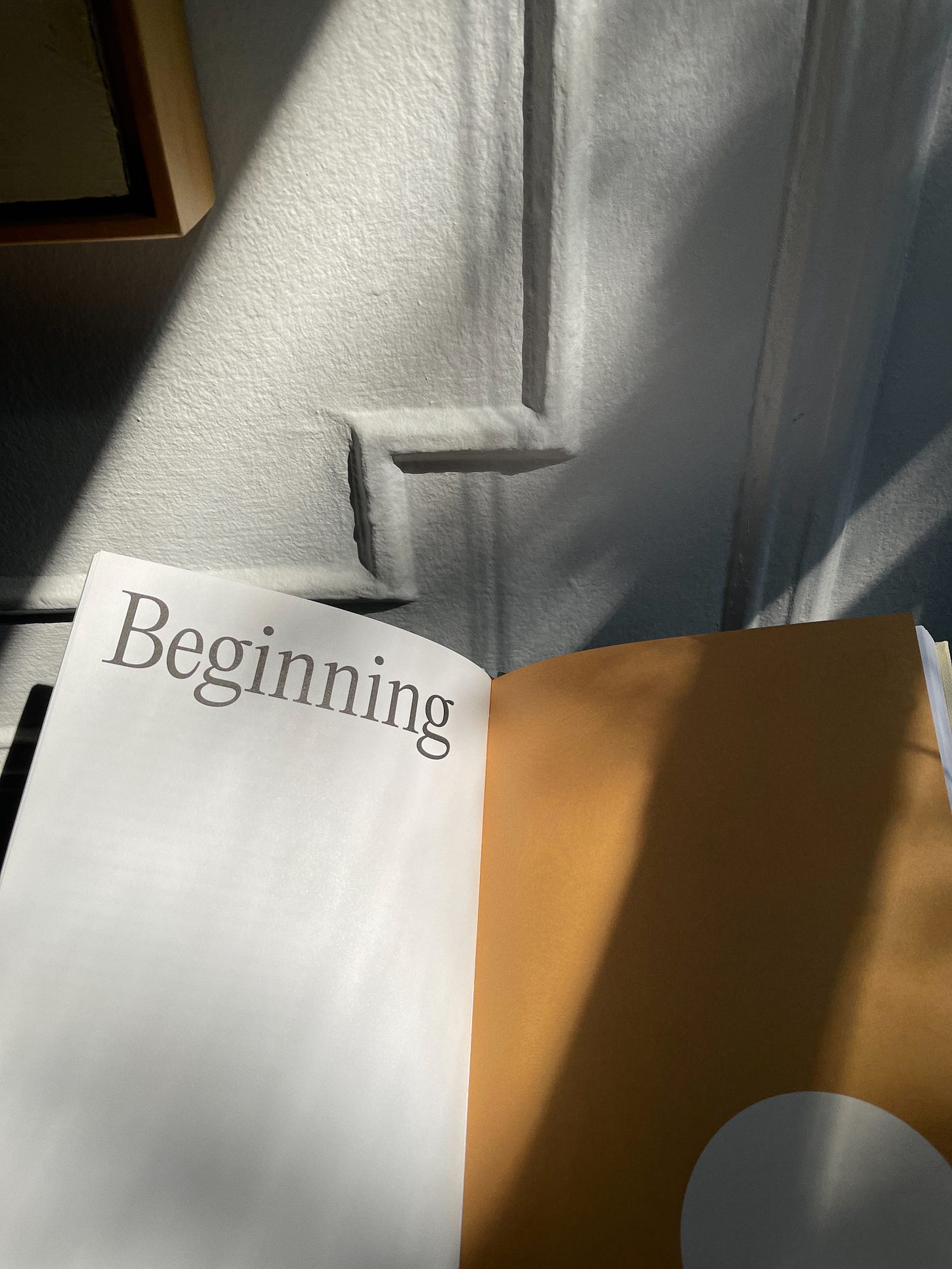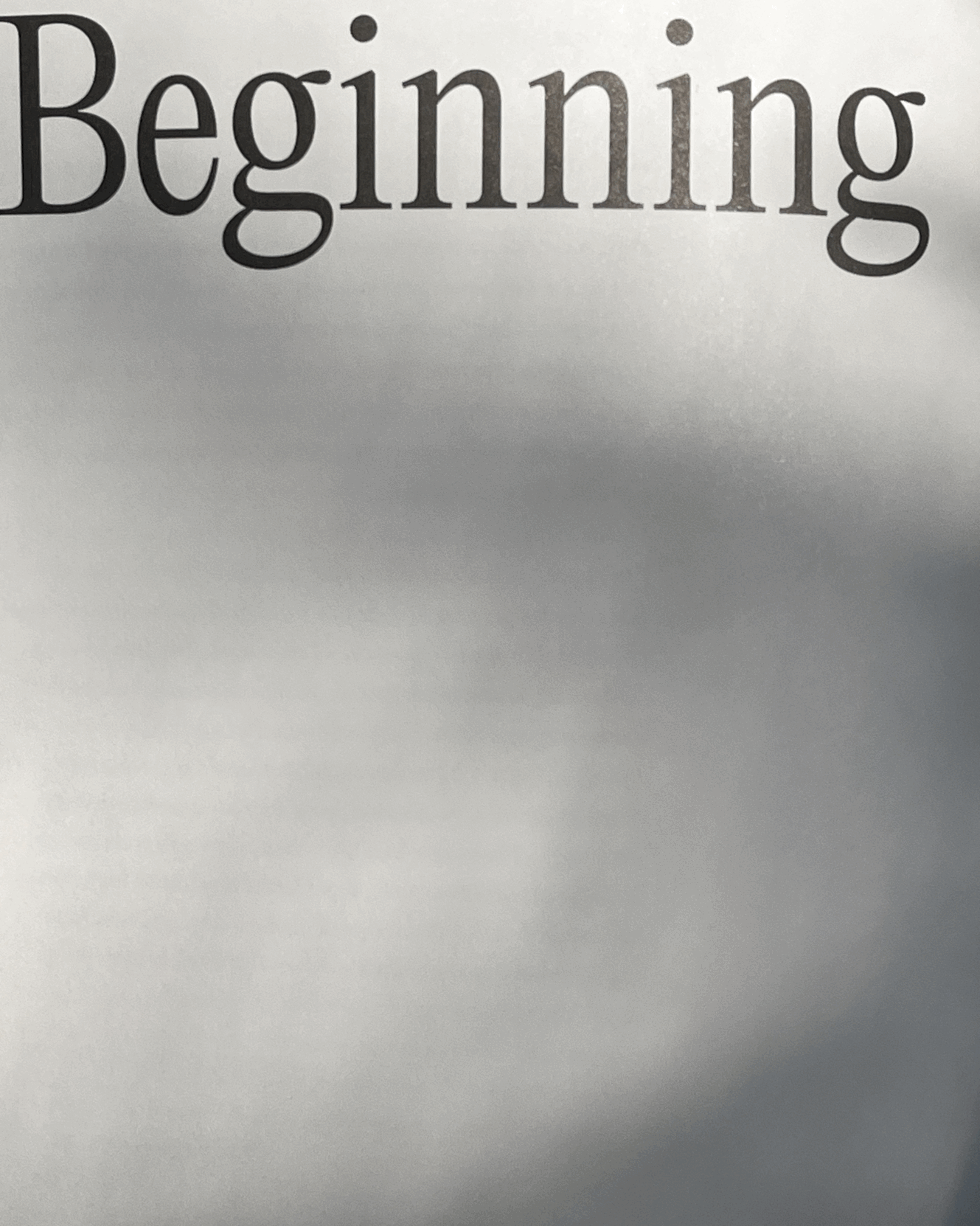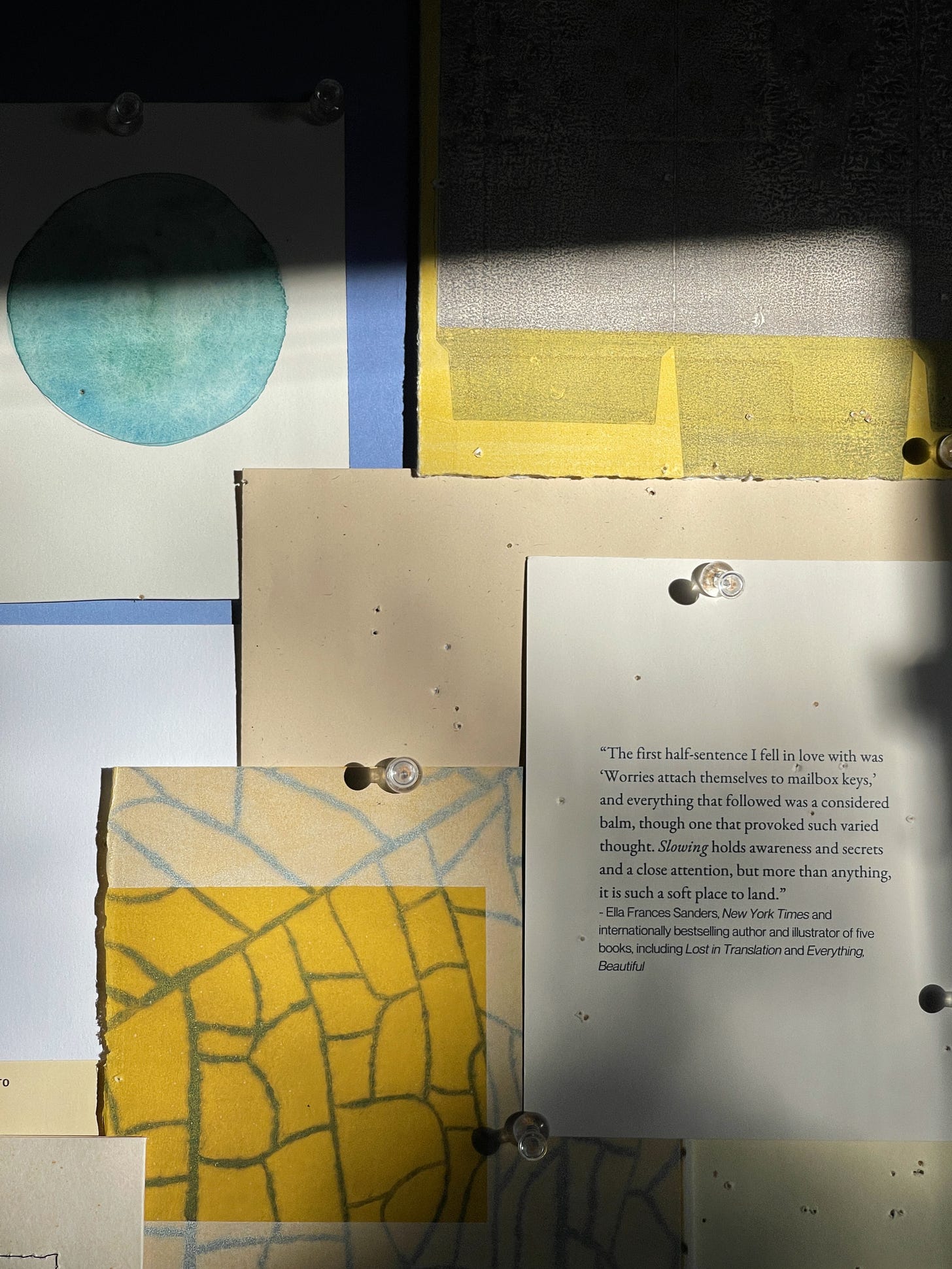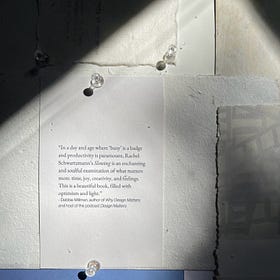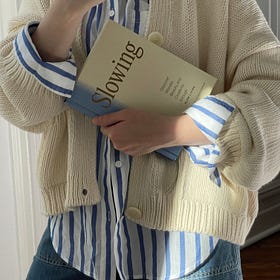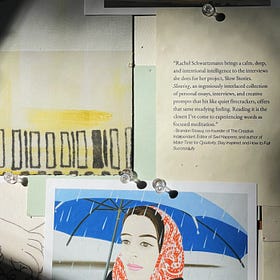SLOWING: On Structure
Notes on structure—both on and off the page
In recent years, I’ve thought a lot about narrative and structure as it pertains to writing and the writing life. (As Elisa Gabbert poignantly writes in her essay “Infinite Abundance on a Narrow Ledge” in Any Person is the Only Self, “I obviously didn’t become an architect, but I do think of writing as spatial. I think essays, like buildings, need structure and mood.”)
Part of that work is reflecting on the structures that have been instilled in me: What should a day, a schedule, a life—or, in this case, a story—look like? What gives it a solid foundation? How do you know it’s moving in the right direction? Where does it begin and end? What is a beginning, a middle, and an end?
The latter was a central question I considered when organizing the stories in Slowing. (Every story, conversation—life—has them, after all.) Writing to this framework, I considered, questioned, and interviewed others about how we defined these benchmarks. I shared ordinary life stories that laddered back to these three chapters as I knew them then.
If I’m being honest, there’s more I could say about them since finishing the book. But that’s the beautiful thing about time—with enough distance, an ending suddenly reintroduces itself as a new beginning.
So, here is what I’ll say for now: I’ve always loved beginnings and endings: the first (especially last!) day of school, the early days of a crush, the last glimpse out of a plane window before landing, a compelling opening line in a novel, a film scene that swells towards a climactic resolution before the end-credits roll.
In reading and writing, beginnings and endings have always felt like tent pole moments. They are periods I can envision clearly, bookends that could draw people in and ultimately bring them home.
But over the years, I’ve come to appreciate the middle and all of its vast unknowns. The heart is in the middle of the body—and the story. It’s the period many of us have been conditioned to fear or dread. It’s where the mistakes or missteps become something from which you can extract meaning.
Yet, throughout the process [of writing Slowing], I still had to combat the idea that I was somehow late to this moment. It was my first book…but was it a beginning, or had the story been writing itself all along?
👋 Read the full story on Literary Hub 👋
Slowing is officially in the world! You can order a copy anywhere books are sold. I've reached a critical point in my life and work, so your support in this way would mean the world to me. (And if you’ve ordered the book already… Thank you!)
AMAZON · BARNES & NOBLE · BOOKSHOP
“The first half-sentence I fell in love with was ‘Worries attach themselves to mailbox keys,’ and everything that followed was a considered balm, though one that provoked such varied thought. Slowing holds awareness and secrets and a close attention, but more than anything, it is such a soft place to land.”
- Ella Frances Sanders, New York Times and internationally bestselling author and illustrator of five books, including Lost in Translation and Everything, Beautiful
Speaking of Slowing…
I’m thrilled to be launching Slowing at P&T Knitwear with the incredible Brandon Stosuy! RSVP here and learn more at the link below. (You can also revisit my podcast interview with Brandon and his collaborator Rose here.)
For Your Next Chapter
If you enjoyed this Slowing Process diary, check out the previous installments…
SLOWING: Punch and Roll
The studio where I recorded Slowing’s forthcoming audiobook is situated inside a high-rise building I hadn’t realized I’d visited before until seeing it again from the street.
Styling SLOWING
Style and storytelling have always been anchors for me, both personally and professionally (I write about this in the book). As I prepare to bring Slowing into the world, the convergence of these two elements has been feeling more pronounced.
SLOWING: On Prompts
I didn’t initially set out to write a book that could be considered categorically self-help, but in addition to sharing my (slow) stories—and the stories of those I interviewed—I wanted to include an element that could help readers find or rewrite their own.
SLOWING: On Interviews
Questions and answers are the bedrock of our lives. We ask for information, meaning, connection. We respond with what we have available to us—whether it’s a long story or a small shrug. To me, the practice of interviewing embodies the adage it’s about the journey, not the destination. I walk away invigorated and sometimes exhausted from an interview, but always more human.
SLOWING: A Color Story
For the purposes of this design diary, I keep coming back to color. I wondered what palette would best convey Slowing’s pillars—time, pace, and creativity—without leaning too heavily into certain wellness trends.
Meet SLOWING
I knew it would be the thing I wrote before writing anything else. I'd been moving so much and so quickly for so long. I needed a place to set some of this down and untangle a lifetime’s worth of stories. And I did. But there was a lot I didn't know throughout this process, namely the nuances of publishing a book—a beautiful, chaotic, and singular experience. I learned that things can change when you least expect it, and as a result, you change, too.



